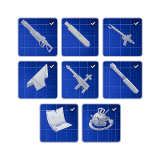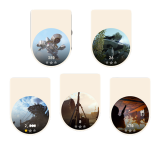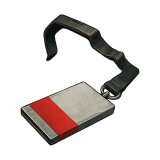ARC Raiders Beginners Guide: How to get started in ARC Raiders?
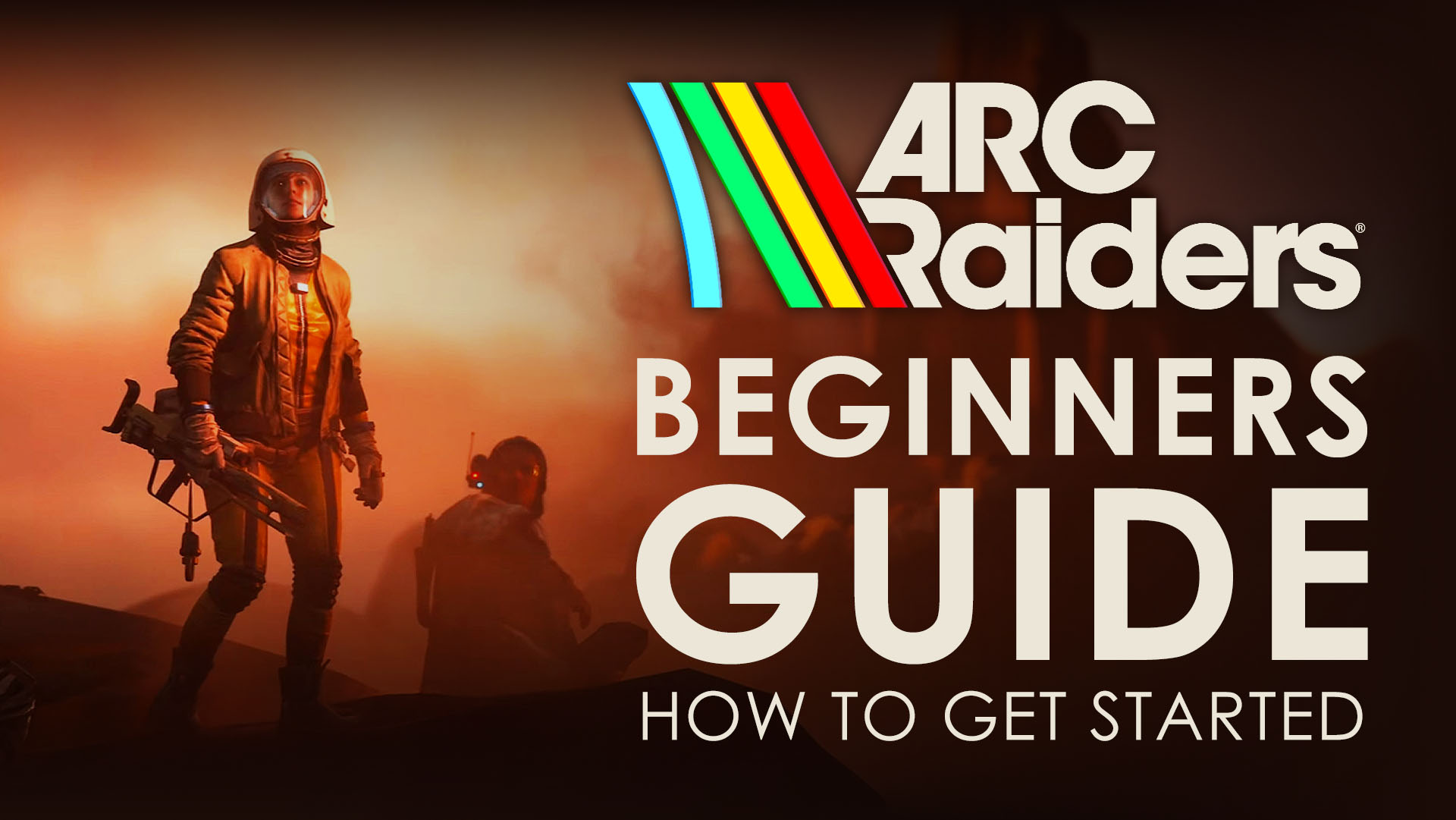
Introduction
Welcome to our ARC Raiders Beginner's Guide, where we will outline the game's particularities and teach you everything you need to know to start your journey in Speranza as an experienced Raider!
Table of Contents
- Getting Started
- Map Selection & Loot Zones
- ARC Enemies
- Loot Rarity
- Crafting & Vendor Systems
- Skill Tree Overview
- Beginner Builds
What is ARC Raiders about?
Arc Raiders is a multiplayer extraction shooter set in a post-apocalyptic Earth overrun by the mechanized threat known as ARC. Players take on the role of "Raiders", venturing onto the dangerous surface from their underground home to scavenge for resources, complete missions, and extract valuable loot.
The game blends intense PvPvE (player vs. player vs. environment) action against both machines and other players with atmospheric exploration, where a player's choices have consequences and everything they bring into a match can be lost if they fail to extract.
Gameplay: What makes ARC Raiders Unique
Gear Up: Before a mission, players prepare in the underground city of Speranza, crafting, repairing, and upgrading gear.
Deploy & Scavange: Players will drop into the "topside" to complete objectives, find loot, and confront threats from both the deadly ARC machines and other rival Raiders.
Extract: Players must reach an extraction point to secure their loot. Failure to do so means losing everything they gathered during that match.
Progress: The experience gained through completing quests and playing contributes to a persistent skill tree, allowing players to develop their Raider's abilities in areas like survival, mobility, or conditioning.
IMPROVE YOUR ACCOUNT PERFORMANCE FAST!
Getting started in ARC Raiders
Before diving into the dangerous world of Speranza, it’s important to understand how ARC Raiders introduces new players to its systems. Your first hours will focus on learning core survival mechanics, familiarizing yourself with your base of operations, and getting comfortable with combat and extraction gameplay.
The World of Speranza
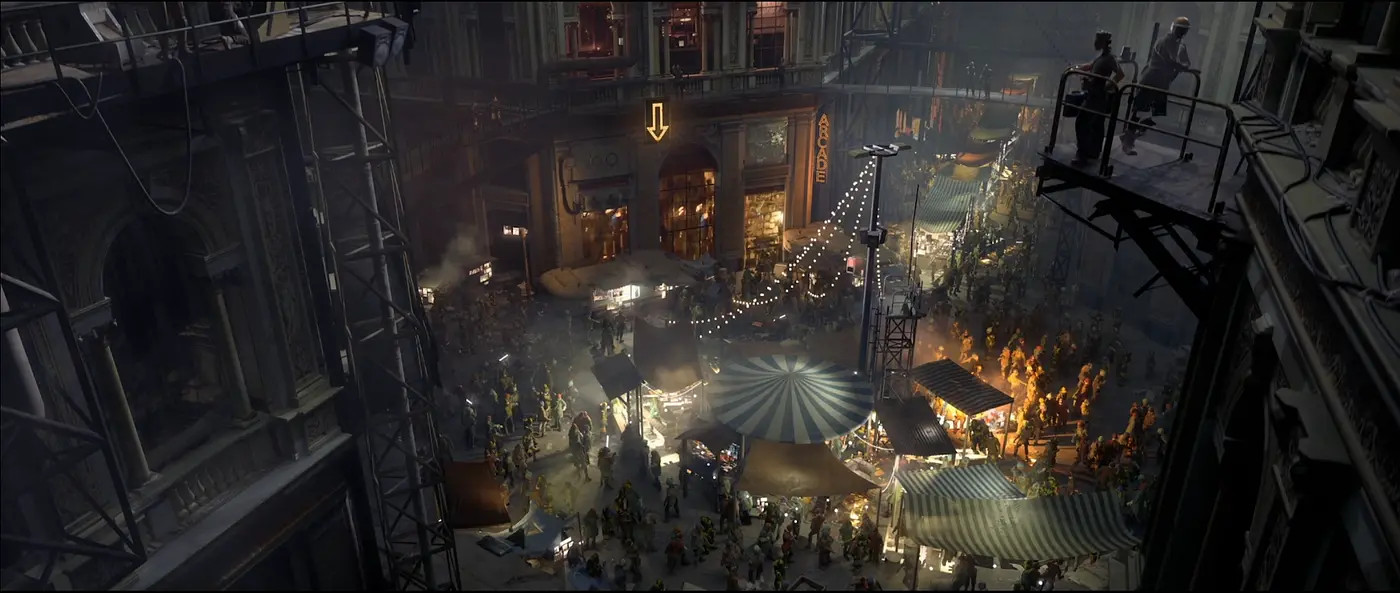
You begin your journey as a Raider, a scavenger and fighter tasked with defending humanity against the mechanical menace known as the ARCs.
Your base, Speranza, serves as the main hub where you can:
- Accept contracts and Feats.
- Interact with vendors like Celeste, Shani, and Tian Wen.
- Craft and upgrade your gear at the Workshop.
- Store and manage loot through your stash system.
Tutorial Missions
After the introduction, you’ll complete a short set of tutorial missions that explain:
- Movement and traversal mechanics (sprinting, sliding, and grappling).
- Combat basics such as weapon swapping, ammo management, and weak point targeting.
- Extraction protocols, teaching you how to secure loot after each mission.
MAX OUT YOUR RAIDER EASILY!
These missions also reward you with starter gear and materials, setting up your first loadout.
Feats and Progression
Feats are ARC Raiders’ version of challenges and achievements. They grant valuable rewards like Creds, XP, and crafting materials, helping you level up and unlock new features. Try completing early Feats such as scavenging zones or crafting your first weapon; they’re designed to ease you into core systems.
Preparing for your first map
Once you’ve upgraded your loadout and learned how to extract efficiently, you’ll be ready to tackle your first real map. Make sure you bring:
- A balanced weapon setup (rifle + sidearm).
- Healing consumables and crafting kits.
- Enough stash space to secure your loot after extraction.
Map Selection
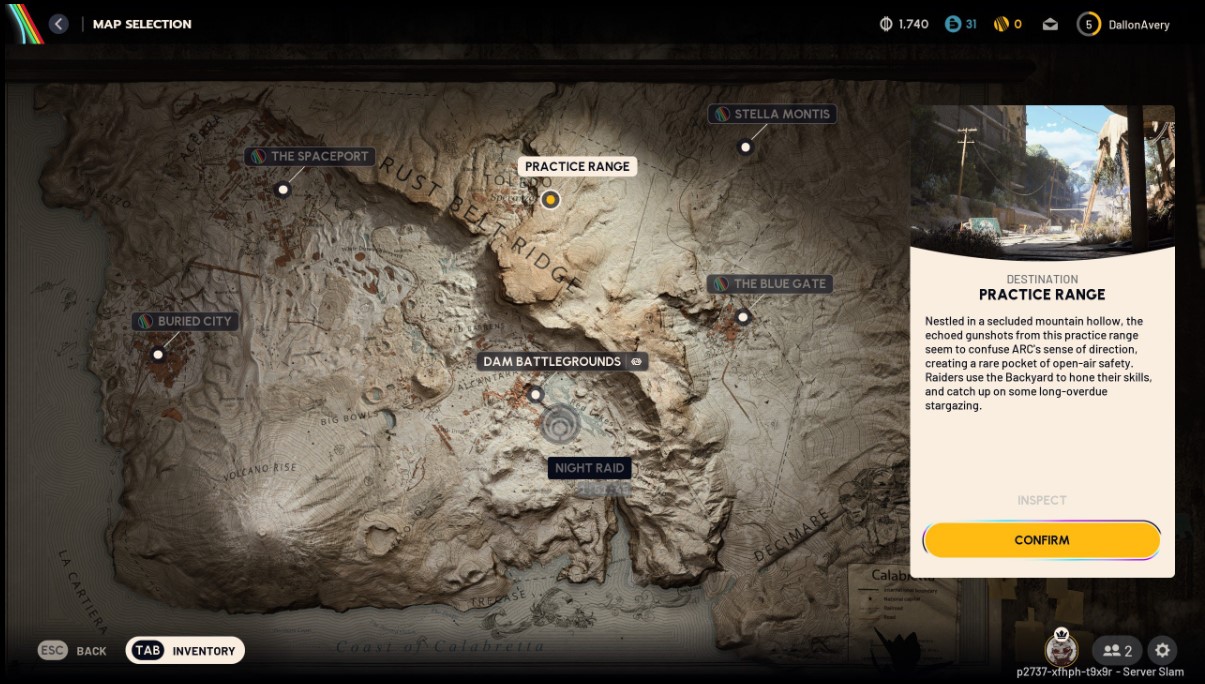
Before every raid in ARC Raiders, the first choice you make is where to deploy. This decision carries real weight: each map comes with its own terrain, history, environmental hazards, and potential loot value. Currently, the game features a rotating pool of maps, with Dam Battlegrounds available at all times, and others like Buried City and Acerra Spaceport appearing for limited-time.
Each map supports both solo play and three-person squads. While your objectives remain largely the same: gather materials, defeat enemies, and extract safely, so your strategy will shift depending on map layout, weather, and even the time of day.
Below you will find all the currently known maps:
Dam Battlegrounds
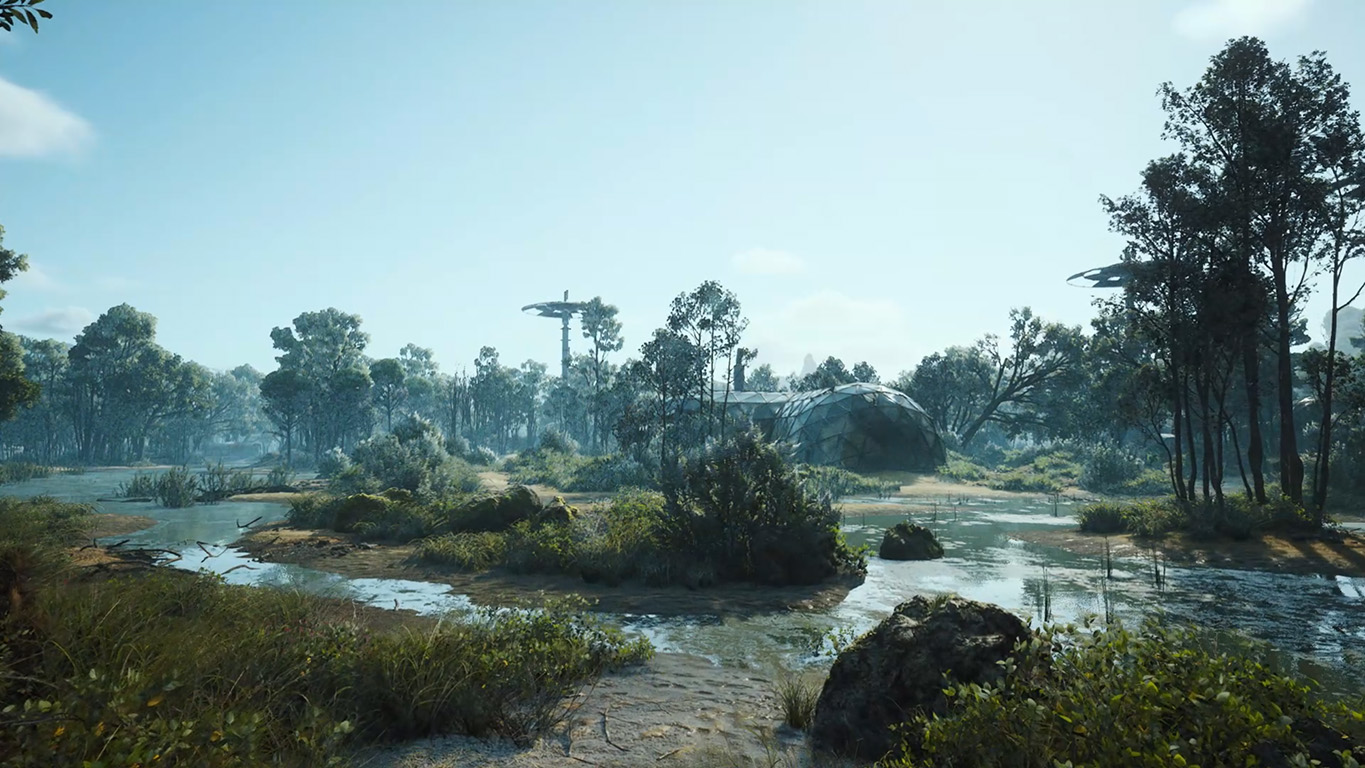
The Alcantara Power Plant is a constant warzone. Toxic swamps and abandoned infrastructure make this area treacherous. A good entry point for new players but still risky due to high ARC density.
Buried City

A haunting desert map with tight alleys and exposed courtyards. This environment offers excellent opportunities for stealth, but it can also lead to sudden ambushes from other Raiders.
Accera Spaceport

This map still echoes the roar of Exodus shuttles; wide open hangars and exposed catwalks create a high-risk battlefield for raiders hunting high-value wreckage.
The Blue Gate
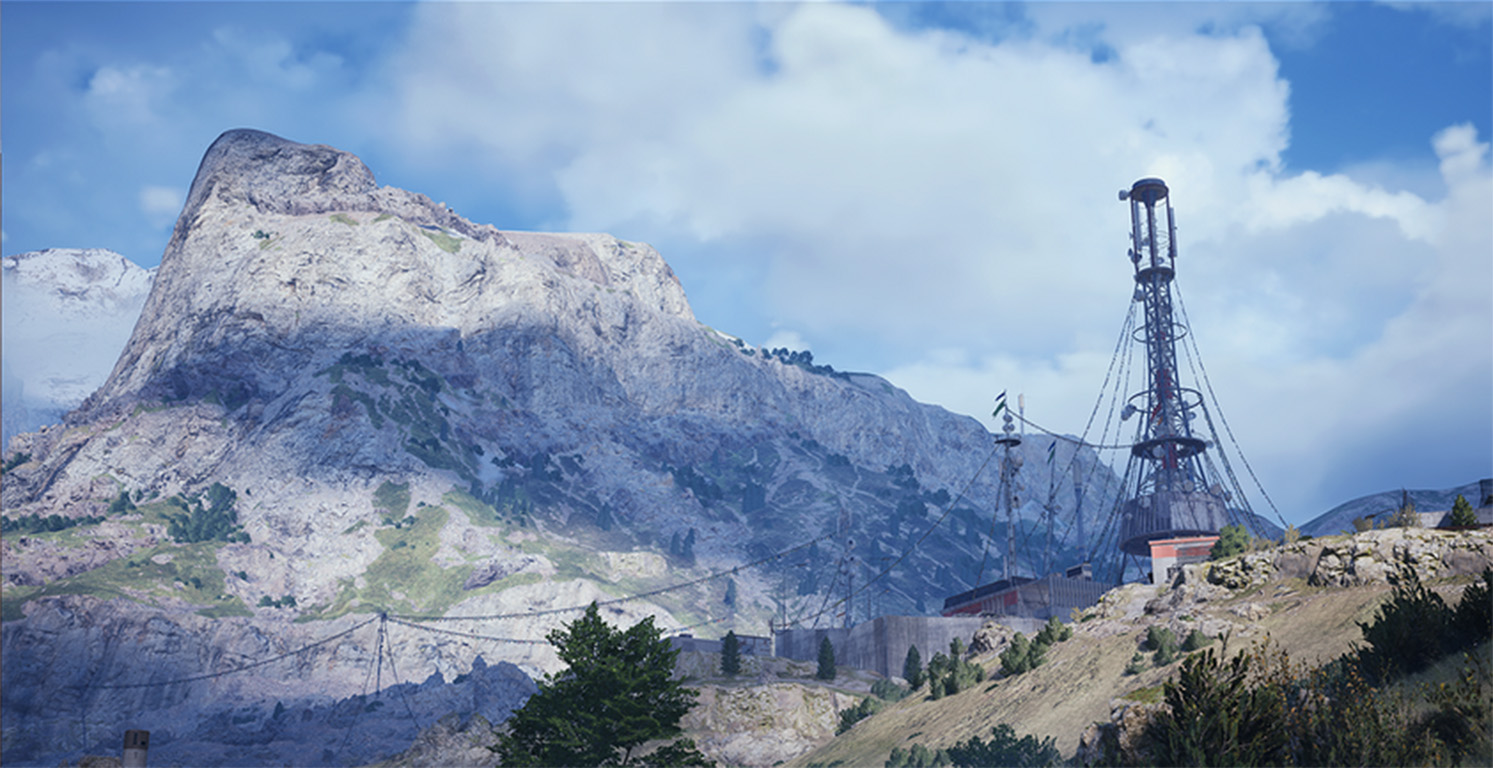
A mysterious, half-constructed transit hub under heavy ARC surveillance, offering abundant materials but punishing any error in timing or positioning.
Stella Montis
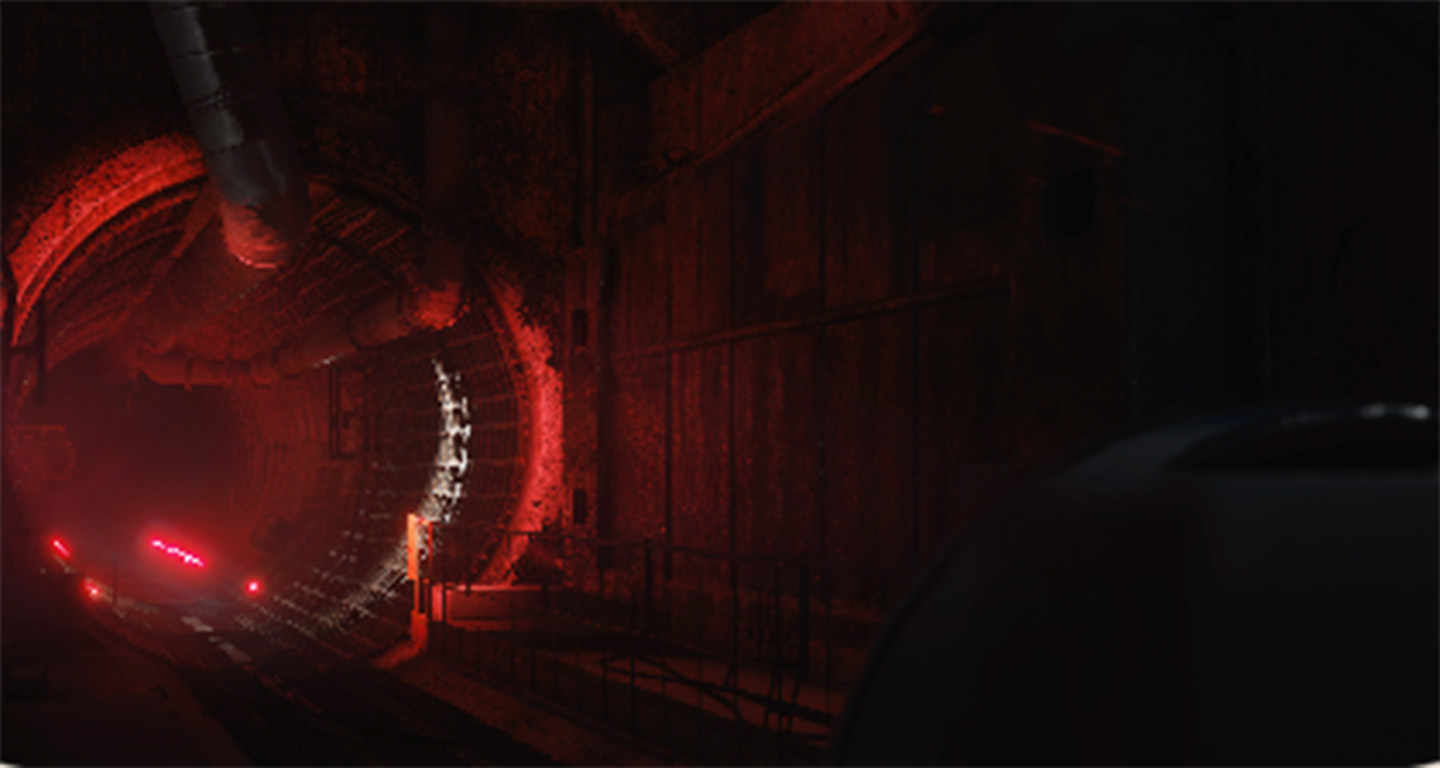
A system of tunnels, with no access to the surface, this map is entirely underground.
Loot Zones

Looting is at the heart of the experience. Whether you're gunning for rare schematics, vital crafting materials, or just stocking up on grenades and bandages, every raid revolves around collecting and extracting loot. But not all areas of the map are created equal, and success often comes down to weighing risk versus reward in real time.
Each map is divided into color-coded zones to signal the potential quality of loot inside:
- White Zones: Low-density, low-risk areas with basic materials and gear. Ideal for fast looting or stealthy runs.
- Orange Zones: Contain higher-value loot but are often patrolled by ARC machines. Expect moderate resistance.
- Red Zones: The most dangerous and most rewarding areas. Packed with loot, and usually swarming with other Raiders and tough enemies.
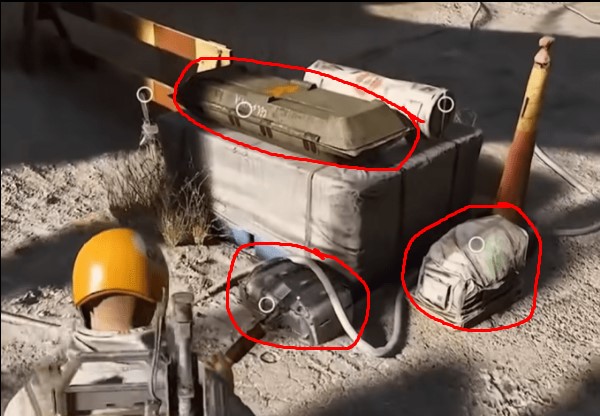
Every loot source falls into a container category. Here's a list of all of them:
- Weapon Case: 1 weapon, up to 2 ammo types, mods or gun parts, and possibly a recipe.
- Medical Bag: Up to 5 healing items and occasionally a schematic.
- Ammo Case: Multiple ammo stacks and a chance at crafting recipes.
- ARC Husks (Baron, Courier, Hornet, Rocketeer): These machine remains require breaching but yield valuable ARC parts, some of which are used for high-end gear.
- Buried Raider Cache: Contains a mix of ammo, grenades, gadgets, and a rare chance at a weapon.
- Field Depot Drop: Requires puzzle completion but refreshes each time. Excellent loot variety.
- Supply Drop: General-purpose cache with ammo, grenades, and healing items.
Because most players are often drawn to high-tier loot zones, you must learn to balance aggression with caution. Going loud might win you a cache, but it can also attract enemies you’re not ready for. Stealthier players may find more success looting lesser areas and slipping out quietly with solid returns.
ARC Enemy Types
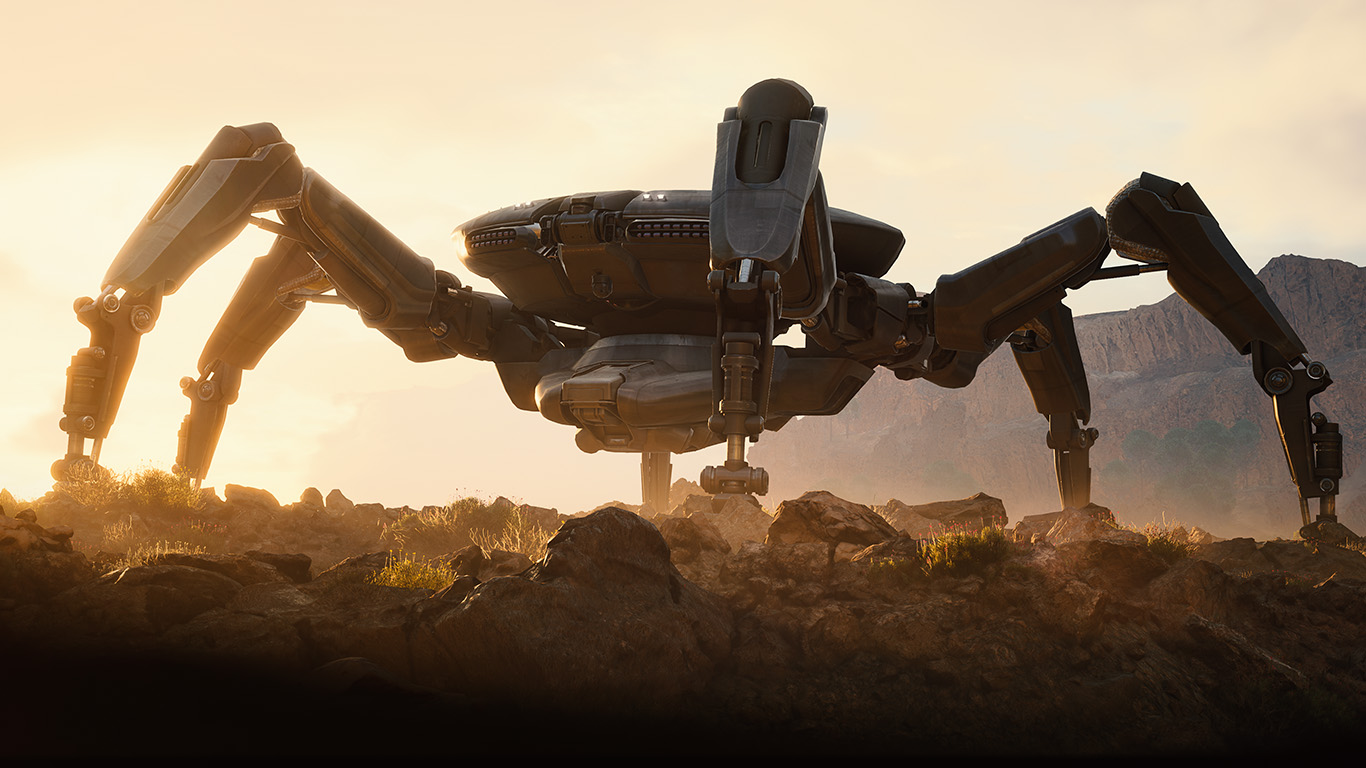
The greatest threat comes from the ARC machines; remnants of a technological force that once tried to exterminate humanity. These autonomous enemies come in many forms, from fast-moving drones to colossal war machines. Some skitter across rooftops; others stalk the landscape like mechanical giants. Regardless of their shape, they all pose a serious risk to unprepared players.
Engaging ARC units should never be taken lightly. While they offer valuable loot like ARC Powercells, machine parts, and rare components, they also make noise and attract attention; both from more ARC and rival players. This risk-reward dynamic is a core part of ARC Raiders’ combat loop.
Let’s take a look at the main ARC enemy types you’ll encounter, along with their drops:
| ARC Unit | Description | Drops |
| Wasp | Fast, agile flying scout | ARC Alloy, Wasp Driver, Light Ammo |
| Hornet | Stronger air unit, tougher than Wasps | ARC Alloy, ARC Powercell, Hornet Driver, Medium Ammo |
| Snitch | Marks players, calls reinforcements | ARC Alloy, ARC Powercell, Snitch Scanner |
| Tick | Jumps on your face! | ARC Alloy, Tick Pod |
| Pop | Self-destructs in close proximity | ARC Alloy |
| Surveyor | Rapid rolling bot, hard to hit | ARC Alloy, ARC Powercell, Surveyor Vault |
| Turret | High DPS, fixed position | ARC Alloy, ARC Powercell, Light Ammo |
| Sentinel | More powerful turret, can one-shot | ARC Alloy, Advanced ARC Powercell, Sentinel Firing Core, Heavy Ammo |
| Fireball | Launches fire attacks, explodes on death | ARC Alloy, ARC Powercell, Fireball Burner |
| Rocketeer | Uses rocket barrages | ARC Alloy, Advanced ARC Powercell, Rocketeer Part, Heavy Ammo |
| Bastion | Tanky, slow walker with strong defenses | ARC Alloy, Advanced ARC Powercell, Bastion Cell, Medium Ammo |
| Bombardier | Artillery-type ARC | ARC Alloy, Advanced ARC Powercell, Bombardier Cell, Launcher Ammo. |
| Leaper | Jumps on players | ARC Alloys, ARC Powercell, Bison Driver |
| The Queen | Event-only boss, extremely dangerous | ARC Alloys, ARC Powercell, Queen Part, Advanced Components |
Fighting ARC units is as much about strategy as it is about firepower. Use cover, aim for weak points like engines and exposed cores, and always be aware of the noise you're making. Sound draws attention, and a drawn-out ARC fight is an open invitation to enemy Raiders.
Make sure to loot ARC bodies after combat, many crafting blueprints and weapon upgrades require components that only drop from specific ARC enemies.
Loot Rarity
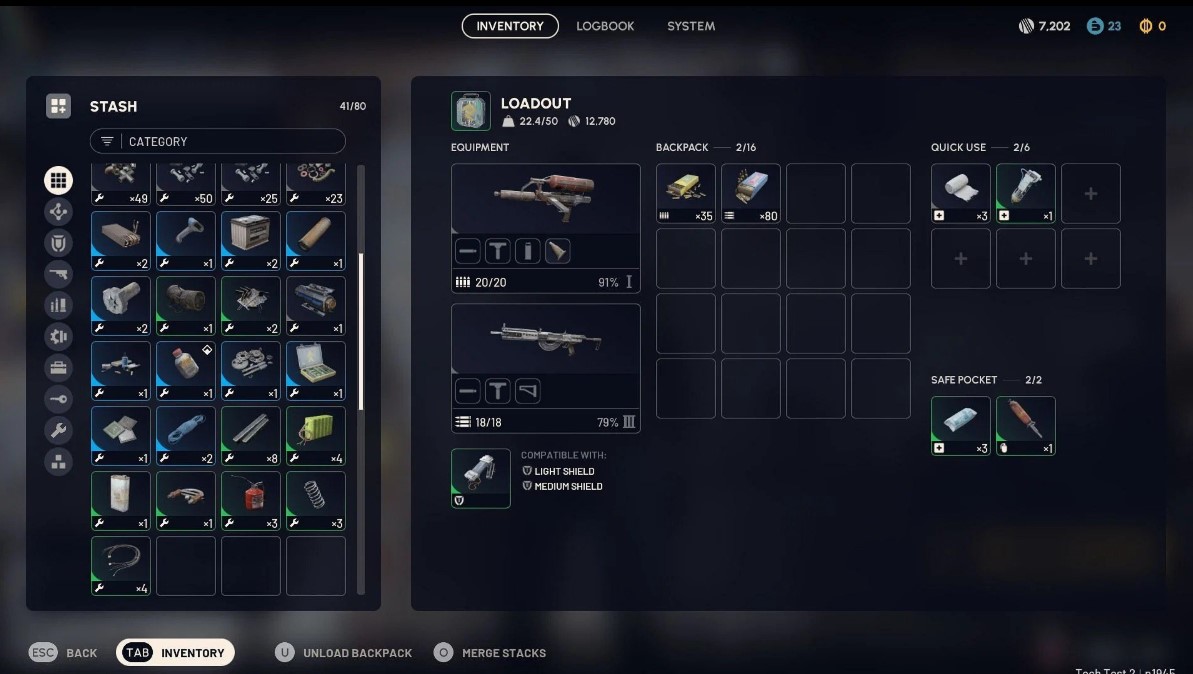
Loot in ARC Raiders is important to player progression, crafting, and survival. Everything found on the surface, from broken electronics to high-grade weapons, is meant to be used for upgrading gear, selling for profit, or fulfilling quest objectives.
The game uses a color-coded rarity system like most games to distinguish the value and function of items, and this system plays directly into how players manage their inventory during a raid.
Loot is categorized into different item types:
- Crafting Materials – Used to create and upgrade weapons, gadgets, mods, and equipment.
- Blueprints – Unlock new recipes for crafting at your workshop.
- Consumables – Items like grenades, medical supplies, and shield rechargers that are used during raids.
- Valuables – High-sell-value items with no crafting use, meant for generating money.
- Weapons, Mods, and Ammo – Gear that can be equipped or broken down into parts.
Each item has a rarity tier, typically color-coded as below:
- Gray/White – Common: basic materials and consumables.
- Green – Uncommon: slightly improved value and utility.
- Blue – Rare: useful components, gear, or recipes.
- Purple – Epic: high-value loot and advanced crafting materials.
- Orange/Yellow – Legendary: typically blueprints or unique, top-tier items.
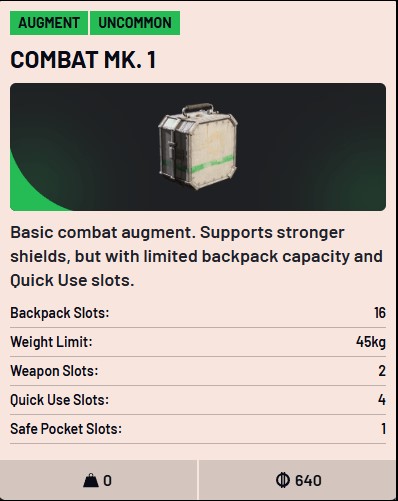
Loot varies in size and weight, and the available space depends on your loadout and gear. Players must decide what to carry, what to drop, and how to organize their inventory efficiently mid-raid.
Crafting & Vendor Systems
Crafting in Arc Raiders is a core loop of raiding for materials and blueprints, returning to your base's workshop to craft and upgrade equipment, and then using that gear on future missions.
All crafting is handled through your Workshop, which you expand and upgrade over time. Your base also houses vendors and your scavenger rooster, Scrappy.
Workbenches Overview
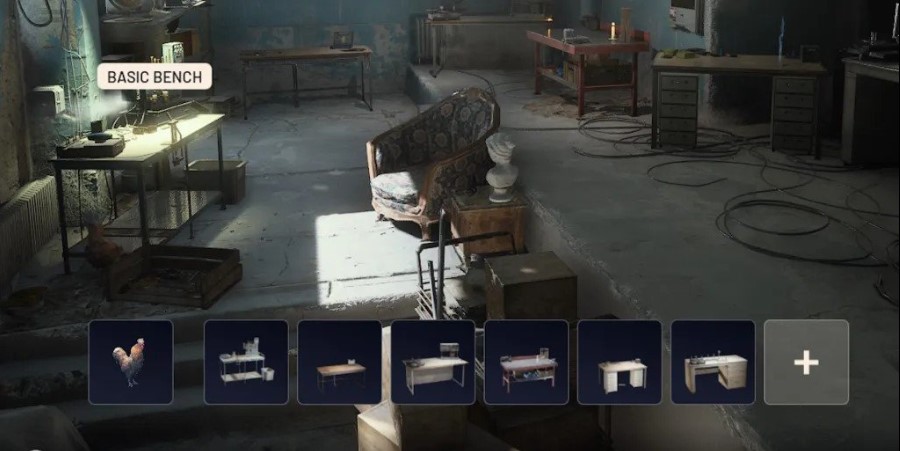
Each bench in your Workshop serves a specific function and requires unique resources to build and upgrade. As you progress, benches can be upgraded to unlock stronger gear and more complex crafting options. The table below outlines what each workbench does and what kinds of items you can expect to create with them:
| Workbench | Function | Tier Unlocks |
| Weapon Bench | Firearms, mods, gun parts | Weapons, ammo types |
| Equipment Bench | Shields, gear, augments | Defensive items and utilities |
| Med Station | Medical consumables | Bandages, shield rechargers, med kits |
| Explosives Bench | Grenades and explosive gadgets | Grenades, explosive weapons |
| Utility Bench | General-use gadgets and tools | Gadgets, special-use equipment |
| Refiner Bench | Rare material processing | Converts ARC parts and scrap into higher-quality crafting materials |
Blueprints
Blueprints are found during raids inside loot containers such as ARC remains, weapon crates, and secured lockers. Once looted, they must be safely extracted to be learned permanently. If you fail to extract, the Blueprint is lost.
To protect valuable finds, place them in your Safe Pocket before extraction. Once successfully extracted, a Blueprint unlocks new crafting options in the Workshop, automatically linking it to the correct bench. Some advanced Blueprints can only be crafted once the related workbench reaches Tier 2 or Tier 3.
Scrappy the Rooster

Scrappy is your loyal workshop scavenger who collects resources between raids. His effectiveness improves with each upgrade, found by bringing back specific collectible items. While you’re in a raid, Scrappy passively searches for crafting materials and deposits them once you return.
| Level | Requirements | Rewards (Success / Failure) |
| Fledgling | None | 12x Common + 2x Uncommon / 5x Common + 1x Uncommon |
| Forager | 1x Dog Collar, 1x Torn Blanket | 13x Common + 4x Uncommon / 6x Common + 2x Uncommon |
| Scavenger | 5x Lemons, 5x Apricots | Unknown / Unknown |
| Treasure Hunter | 8x Prickly Pear, 8x Olives, 1x Cat Bed | Unknown / Unknown |
| Master Hoarder | 12x Apricots, 12x Mushrooms, 3x Very Comfortable Pillow | Unknown / Unknown |
Scrappy provides a steady supply of low and mid-tier crafting components, including Metal Parts, Fabric, Plastic, Rubber, and Chemicals. As you increase his level, the amount and rarity of materials improve, making him one of the most reliable passive resources for Workshop upgrades.
Vendors Overview
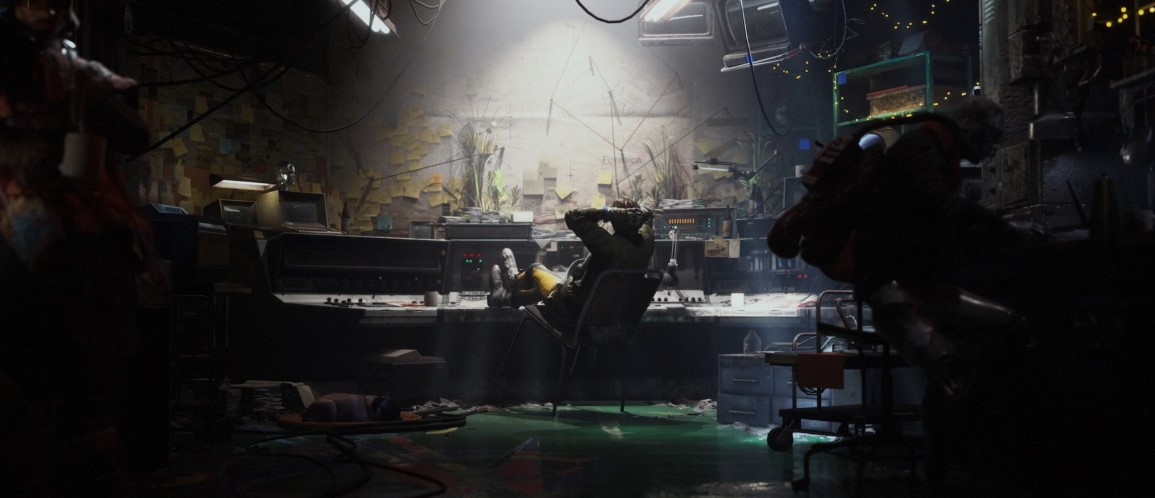
Vendors in Arc Raiders, known as Traders, form the backbone of Speranza’s underground economy. Each one specializes in different gear, materials, and upgrades. They also assign quests that reward you with currency, items, and experience, making them essential for both progression and story development.
| Trader | Sells | Description |
| Celeste | Basic Materials, Topside Materials | The leader of the Raiders and founder of Speranza. Celeste is both a strategist and a symbol of hope for humanity. She manages key supply lines and oversees resource distribution. |
| Shani | Raider Hatch Key, Binoculars | Head of security and Speranza’s tactical coordinator. Shani provides special items tied to reconnaissance and mission access, often through security-focused quests. |
| Tian Wen | Weapons, Ammo, Weapon Mods | A reclusive gunsmith with unmatched technical skill. She sells firearms, ammunition, and weapon mods once you earn her trust through raid contracts. |
| Apollo | Gadgets, Grenades | A traveling mechanic turned local supplier. Apollo trades in field gadgets and explosives, and often repairs or modifies your gear between missions. |
| Lance | Augments, Armor, Medical Items | A friendly android medic who specializes in shields, augments, and medical gear. Lance’s shop is the best place to restock on healing and defense equipment. |
Each trader has their own personality and story, adding flavor to Speranza’s world. Celeste keeps morale high, Shani enforces security, Tian Wen crafts precision weapons, Apollo handles field tech, and Lance keeps everyone alive.
Traders also provide quest lines that reward unique blueprints or currency. Completing these quests can unlock rare crafting materials or advanced gear. Selling valuables like electronics, refined parts, and scavenged tech remains the fastest way to earn money for vendor purchases.
Skill Tree Overview

In ARC Raiders, your character isn’t just defined by their loadout or weapons; long-term progression plays a vital role in how you handle raids, enemy threats, and your general efficiency. This progression is tied to an experience system that feeds into skill trees, quests, and other reward systems designed to shape your playstyle and Raider level.
As you complete maps, quests, and other activities, you gain XP. This XP contributes to your Raider level and earns you skill points that you can allocate across three specialization trees. These trees influence things like stamina efficiency, stealth, looting speed, mobility, and even access to special mechanics like breaching locked containers or field crafting.
Beyond the skill system, quests also play a major role in progression. They’re provided by key NPC vendors and reward players with XP, crafting materials, and gear; sometimes even granting weapons or schematics upon acceptance. These quests offer narrative flavor as well as targeted gameplay tasks that encourage map exploration and specific objectives during raids.
There are three core skill trees: Conditioning, Mobility, and Survival. Each tree focuses on a different aspect of your Raider’s performance and unlocks passive benefits or entirely new capabilities. Skills are tiered and require investing points in prerequisite nodes before unlocking more advanced upgrades.
- Conditioning boosts stamina capacity, recovery, weight capacity, and resistance to environmental hazards like explosions or fall damage.
- Mobility enhances movement — improving climbing, vaulting, dodge rolls, and even letting you wall-leap or sprint without stamina drain after certain maneuvers.
- Survival emphasizes stealth, looting efficiency, crafting in the field, and noise reduction — making it ideal for players who want to avoid direct conflict and maximize resource gain.
Skill points are earned through gameplay progression and can be used flexibly. You’re not locked into one path and can build a hybrid style by picking skills from across different trees.
Conclusion
ARC Raiders blends high-stakes PvPvE action with deep customization and layered systems that reward planning, skill, and creativity. Whether you're navigating a chaotic firefight, sneaking past ARC patrols, or managing your limited inventory for maximum profit, every decision matters. From your first extraction to your hundredth, there's always a new trick to learn, a new tool to master, or a new story to create in the rust-covered world above Speranza.
As you continue exploring, crafting, and fighting your way through the surface, keep experimenting with different builds, playstyles, and paths to success. And remember: survival isn't just about firepower, it’s about being smart, timing, and the ability to adapt when things go sideways.
Good luck out there, Raider. You’re going to need it!
ARC Raiders Beginner’s guide FAQs
Is ARC Raiders easy?
ARC Raiders isn't neccessarily easy, as it combines PvPvE combat, stealth, and extraction mechanics that reward experience and careful play. New players may struggle early but will keep improving quickly with practice
What to do when you first start in ARC Raiders?
Start with free loadouts, explore safer zones, complete vendor quests, and upgrade your workshop. Prioritize learning the maps and how extraction works.
What is the best beginner weapon in ARC Raiders?
The Ferro is widely recommended; it's reliable, easy to craft, and often given as a quest reward early on
Is ARC Raiders combat easy?
Combat can be intense and punishing, especially against high-tier ARC enemies or real players. It demands smart movement, good aim, and item management.
About Kboosting
Thank you for taking the time to read ARC Raiders Beginner’s Guide. Did you know that at KBoosting, we are not only about guides and articles? We also provide boosting services to make things even easier for you. Check out our ARC Raiders boosting services and let us handle everything for you, while you have some fun in the game!


